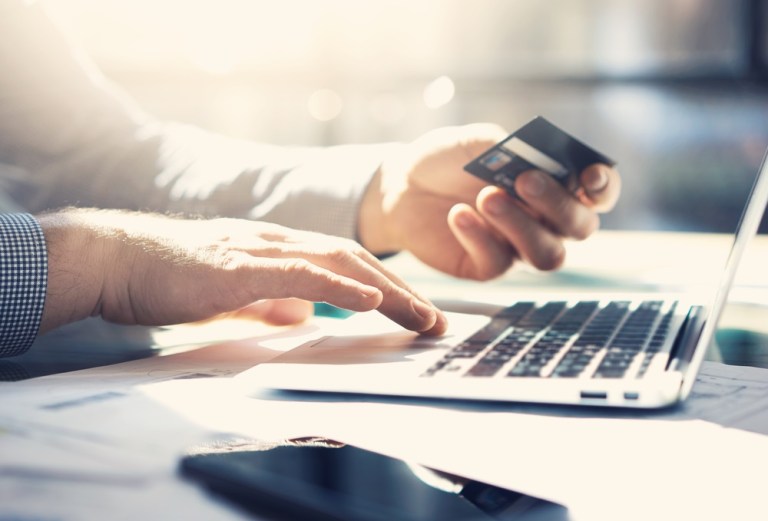
Alternative payment methods are in demand in a world where eCommerce is growing by leaps and bounds, and across borders. But cash still remains a sticky, and in some regions, favored conduit for transactions. In the latest Data Drivers, Steve Villegas, VP of Partner Management at PPRO, weighs in on the ways hard currency, and other forms of payment, can make the leap into the digital realm.
Cash. Consumers. Merchants. Alternative payment methods. eCommerce.
Not just buzzwords or stakeholders in payments. These are the essential pieces of the puzzle when it comes to eCommerce, writ large across a global stage.
And when it comes to far-flung currencies, cultural differences and cash translated into bits and bytes, consistency counts.
In the latest Data Drivers installment, Steve Villegas, vice president of Partner Management at PPRO Group, told PYMNTS’ Karen Webster that “alternative payments are going to drive the future of eCommerce.” But between the promise and the reality, some connectivity is on order, bringing consumers payment options – and merchants toward better conversion rates when it comes to online commerce.
Data Point One: 17.6 Percent
This is the percentage of credit card penetration worldwide – a lot of cards, but not a lot of penetration on a global stage.
Villegas said that while credit cards are well-entrenched in North America, the same is not true on a global basis, where direct debits, real-time bank transfers and other methods may hold sway. Alternative payments may capture 50 percent of transactions this year, globally speaking, he said.
The stats of Singles Day show the allure of shopping online using an alternative method of payment. As has been widely reported, Alibaba grabbed as much as $25 billion in sales to 225 countries and regions. Roughly 90 percent of transactions were completed on mobile devices.
The read across is a positive one, said the executive – but also points to some frictions that frustrate would-be customers. “Consumers around the world are very interested in U.S. products … what happens, though, is that a consumer in another country goes to a site in the U.S.” and doesn’t have a Visa or Mastercard – and thus there is a drop-off rate when it comes to completion of transactions, he said. And not an insignificant tally: Shopping cart abandonment may top 50 percent in some countries simply due to lack of payment options.
Traditionally, banking systems have developed their own rails that are regionally focused, and so, as Villegas said, connecting to those rails can be a challenge. “What happens when you are talking about several hundred payment methods around the world” is that the process of connecting to each and every one, in addition to reconciliation, becomes a burden.
However, supply and demand – particularly when a consumer wants to buy something across borders – helps to ease those burdens, in part as technology offers ways to connect merchants, financial institutions and consumers. eWallets are taking the place of traditional payment choices, such as bank transfers or cards.
Data Point Two: Three Billion
This is the number of people estimated worldwide to be without a bank account – and yet, armed with mobile devices, can be brought into the world of digital transactions and can participate fully in the global economy.
It’s a gradual process, to be sure, to move from hard currency to digital only, agreed Webster and Villegas. Consumers may go to a convenience store and use cash to pay for something they want to buy online, indicating the stickiness of cash (via vouchers in some cases). The mindset in these emerging markets remains “cash in and cash out.”
Cash is still a growing payment method, stated Webster, with a relevancy that is important and must be top of mind (even as it is top of wallet).
Data Point Three: 38 Percent
This is the average rate of eCommerce growth of the 11 fastest growing countries globally. That far outpaces the 12 percent a year eCommerce growth seen in the U.S.
These are countries, said Villegas, who have moved to embrace “a very strong mobile network,” and where China provides a stark reminder of the explosive boost to eCommerce, at 64 percent year over year. Other areas that have high eCommerce growth rates include Indonesia and Malaysia. Growth is high both in bank payment-related transactions and with eWallet. Russia is also showing growth, Villegas stated.
The common denominators in moving cash into the digital world are that preferred alternative payment methods are developed by region, said Villegas. The real-time bank transfer, or direct debits or wallets, are the primary developments on a regional basis. But “every country wants to keep as much of the goods and services [that they can] within the [country’s economy],” he told Webster, “and try to go abroad to address other areas of the world” to sell those wares.
To keep the growth moving at that rapid pace, he said the key is to simplify the connection.
Depending on the market, the mindset may be a little bit “more cart before the horse,” as the executive said. There may be the observance that “hey, we are getting a lot of traffic from this region” and transaction falloff is high, too – with further examination showing that popular payment methods are simply not being accepted.
Against that backdrop, he noted that PPRO can connect clients to 140 payments offerings across a single integration – and with reconciliation, that takes into account settlements as they can be daily or, in some cases, weekly (and are more secure than credit cards).
It’s been a year since India’s grand experiment in demonetization, and Webster queried what the takeaways might be headed into 2018.
“As countries begin to look at what current commerce looks like – and how do they become easier and more relevant to do business with around the globe” with a nod to the fact that alternative payments, mindful of specific markets, have to be seen as “part of the future of growth.”